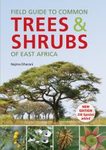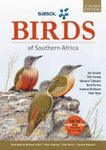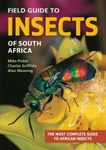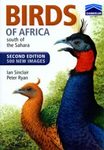Many useful tips on tropical trees identification
By
Gehan de Silva Wijeyeratne
23 Jun 2019
Written for Paperback
I have visited Africa several times and been interested in learning the commoner trees. However, my main interest in this book was because it has many useful pointers for improving one's skills in identifying trees across a wider geographical range. This is especially the case with trees found in the tropics. My interest in learning to pick out key features of trees gained a particular significance after working on a pocket photographic guide to the trees of Sri Lanka. As I had anticipated, although the focus of this book is the trees of Southern Africa, there is much in this book that would help anyone with an interest in trees anywhere in this world.
The book is divided into two parts. Part 1 covers 'Principles of Tree Identification' and spans pages 6-55. Part 2 is on 'Tree Groups' and runs from pages 56-169. Part 2 is clearly focussed on trees from Southern Africa, but as I will explain later, there is much even in this section which is of interest to tree watchers from other parts of the world. Everything in part 1 is of interest to tree watchers from anywhere. There are two factors that make the identification of trees harder than other groups such as birds and mammals. These are very clearly outlined in the book. Firstly, trees are modular organisms and don't have a defined shape. For example, a baby elephant, an elephant 20-30 years old and one very senior in years all have the same basic shape. Trees on the other hand, rarely have a consistent shape that is suitable for identification. The authors take the view that stems and leaves are the basic units that have some consistency and like lego bricks can be put together into trees albeit varying slightly in shape, volume, height, mass and so on. The 43 tree groups are groups of trees that have similar building blocks. Implicit in this is the second factor that makes identification of trees difficult. With mammals for example, all giraffes and cats would have an easily identifiable shape. But with trees, it is equivalent to some giraffes looking like lions and some lions looking like giraffes. So whilst with birds and mammals we can begin by identifying what a family looks like, with trees one approach is to look at the end result in terms of stem and leaf, then group trees with similar end results and work back to see which one of many families a tree can belong to.
This is not daunting as it may seem as the authors have developed a key where one starts with a simple flow chart like a branching diagram with each node having two branches and one works throughout by asking a series of questions. To fit onto pages in a readable size, the diagram is broken out into three diagrams, each of which occupies a single page. Fairly simply and easily one can navigate to one of the 43 groups which are then indexed to one or more pages which contain details of the plant families with trees having that particular character set. The characters in question are largely to do with the type of leaf, the shape of leaves and leaflets, how they are arranged, the presence of spines, the presence or absence of latex and so on. The plant groups have clear and simple ‘icons’ or stylised outline drawings which illustrate the salient leaf and spine (where present) arrangement of each of these groups to make the keying a fairly easy visual process. Such keys have been in existence for decades and are familiar to not only plant enthusiasts but students of various groups of animals as well. But it takes many years of field experience and skill to construct keys that are intuitive and easy to use. The keys in this book have been published before in the ‘Field Guide to Trees of Southern Africa’ by the same authors. The second edition of the field guide published in 2013 is a hefty 732 pages. Whereas the field guide assumes some degree of familiarity with using keys and field identification, this book, especially in Part 1 has an overt focus in helping beginners to get to grips with key features of tree identification.
Given how easy the keys are, does that make the first 57 pages redundant? No. Much of the introductory section is aimed at beginners. Photographs and diagrams explain many physical features that are critical for plant identification. These sections are some of the best I have seen in a plant book as in most plant books this is the sort of aspect that is rather condensed. Whereas in this book entire pages are devoted to explaining topics such as 'Leaf arrangement', 'Discolorous leaves' (meaning the upper and under surfaces have different colours), 'venation pattern', 'Secretory cavities', 'stipules', 'Spines, thorns and prickles', to name a few. The stylised diagrams accompanying these sections are the best I have seen. The carefully chosen photographs also serve to illustrate well, features that are not all that clear when reading text alone in a botanical dictionary. The pages devoted to 'External glands' and 'Domatia' illustrate with photographs, other features that are useful for identification as well as for understanding plant and animal interactions. The introductory section is one of the best I have seen for beginners and even those with some experience will find the content interesting.
Good design and clear instruction are hallmarks of this book and introduce beginners to a number of technical topics in a way which is easy to understand. Given its African focus, the three pages on distribution include two maps, one showing the regions and centres of plant endemism and another showing the major biomes of Southern Africa. However, given that many of the families covered in this book have a distribution across tropics and with some families present in temperate latitudes as well, this book has an application well beyond Africa for anyone wanting to take a critical look at identification features of trees. It is a very useful book for learning what to look out for in the field for identifying trees.
1 of 1 found this helpful
-
Was this helpful to you? Yes No















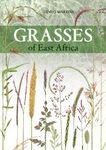




![Flora Vascular de Canarias [The Vascular Flora of the Canary Islands]](http://mediacdn.nhbs.com/jackets/jackets_resizer_medium/26/262479.jpg?height=150&width=102)

